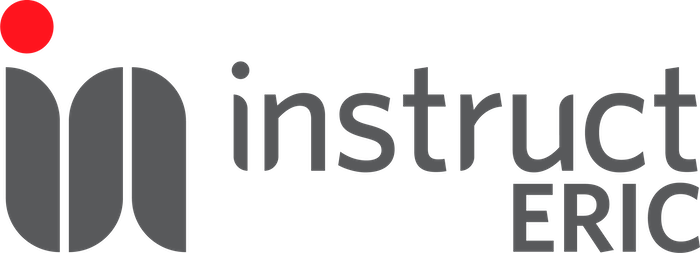Instruct-BE Annual Report Highlights and New Technologies
Instruct-BE is made up of two facilities in Belgium, offering access to high-end structural biology equipment and services: Nanobodies4Instruct, and Robotein®.
Find out more about the centre and explore their technologies here.
The Nanobodies4Instruct facility generates Nanobodies, the variable domains of heavy-chain only antibodies that naturally occur in camelids. Nanobodies are exquisite chaperones for crystallising membrane proteins, multiprotein assemblies, transient conformational states, and intrinsically disordered proteins. Nanobodies can also be used to stabilise protein-protein interactions and other applications in (structural) biology. Their use extends to structural biology as once they are structurally characterised, the same Nanobody can be functionally expressed in eukaryotic cells to track their targets inside a living cell. Megabodies have been used to obtain 3D reconstructions for membrane proteins that suffer from severe preferential orientation and can be applied as fiducial markers on small proteins that are otherwise too small to allow accurate particle alignment.
Find out more about Nanobodies4Instruct and apply to access the facility here.
Robotein® is a technology platform, which offers automated screening for optimal recombinant protein expression, purification, and formulation, together with biochemical/biophysical protein analysis. High throughput (HT) experiments are carried out with the help of two automated liquid handling workstations, in combination with capillary electrophoresis (LabChip GXII) for fast and easy nucleic acids and proteins separation, and biolayer interferometry (Octet HTX platform) for the analysis of biomolecular interactions and protein quantification. Thus, for example, this technique is used to measure the avidity and affinity of polyclonal and monoclonal antibodies, respectively, with specificity for any purified antigen. In addition, the combination of a protein microarrayer with FTIR imaging provides information on protein identity, post-translational modifications, and conformation.
Find out more about Robotein and apply to access the facility here.
Technological Advances in 2022
Nanobodies4Instruct
- In 2022, Nanobodies4Instruct acquired an Ultraflextreme Enhanced MALDI-TOF/TOF mass spectrometer as a flexible R&D and QC-tool for protein research. The system will mainly be used to identify/characterise nanobodies and their respective binding partners. Both intact mass measurements and/or the elucidation of the AA sequence by means of Top-down sequencing (intact protein fragmentation) or following an enzymatic digestion step can be employed to identify/characterise known and unknown proteins. Moreover, the MS will be used to detect PTMs and potential degradation patterns. The implementation of the MALDI-TOF/TOF in current workflows is currently ongoing.
Robotein®
- Robotein® reported last year the development of a high throughput assay that has been developed for the measurement of the avidity of polyclonal antibodies for the receptor binding domain (RBD) of the SARS-CoV-2 spike protein, using biolayer interferometry. This allows to obtain real-time kinetics measurements of the antibody-antigen interaction and to deduce avidity (i.e. half-life of the complex), giving an overall view of the quality of the polyclonal antibodies induced by the COVID-19 mRNA vaccination.
- A new tool for the detection and inhibition of proteins involved in antimicrobial resistance. The Robotein® facility was also used to characterise the interaction between engineered antibody fragments (nanobodies) that bind and inhibit the enzymatic activity of Class C ß-lactamases (Figure 1). In addition, Robotein® was also used to set up the first generation of ELISA for the detection of this class of ß-lactamase. This tool responds to an urgent need of medical authorities and staff to detect and identify resistance to specific antibiotic families.

Figure 1.
- A new tool to control the quality of therapeutic antibodies using ATR-FTIR spectroscopy. We optimised conditions for obtaining highly reproducible grafting of 11-mercaptoundecanoic acid. On that basis, we developed an easy to-use, cost effective, and timesaving biosensor based on ATR-FTIR spectroscopy able to detect immunoglobulins during their production. A germanium crystal, used as an internal reflection element (IRE) for FTIR spectroscopy, was covalently coated with immunoglobulin-binding proteins. These types of functionalised surfaces could bind only immunoglobulins present in complex media such as culture media or biopharmaceutical products. The potential subsequent analysis of their structure by ATR-FTIR spectroscopy makes this biosensor a powerful tool to monitor the production of biotherapeutics and assess important critical quality attributes (CQAs) such as high-order structure and aggregation level.
Structural Biology Activities in Belgium
- Nineteenth Meeting of the Belgian Biophysical Society on “Protein Folding and Assembly”, University of Liège, Belgium, September, 2 2022
- BECM/Belgian Cryo-EM user meeting September 16, 2022 at VUB in Brussels. The aim was to highlight exciting research involving cryo-EM within BECM and the greater Belgian EM community.
- Next-Generation Protein Analysis and Detection (4th edition), May 30-31, 2022 at ICC in Gent.
Training
The Nb4Instruct workshop preparations have been underway since August 2022 for our upcoming workshop in 2023. A dedicated team worked hard to ensure that everything is in place for a successful and productive personalised and hands-on experience for each participant. We look forward to welcoming everyone to the workshop in January 2023.
